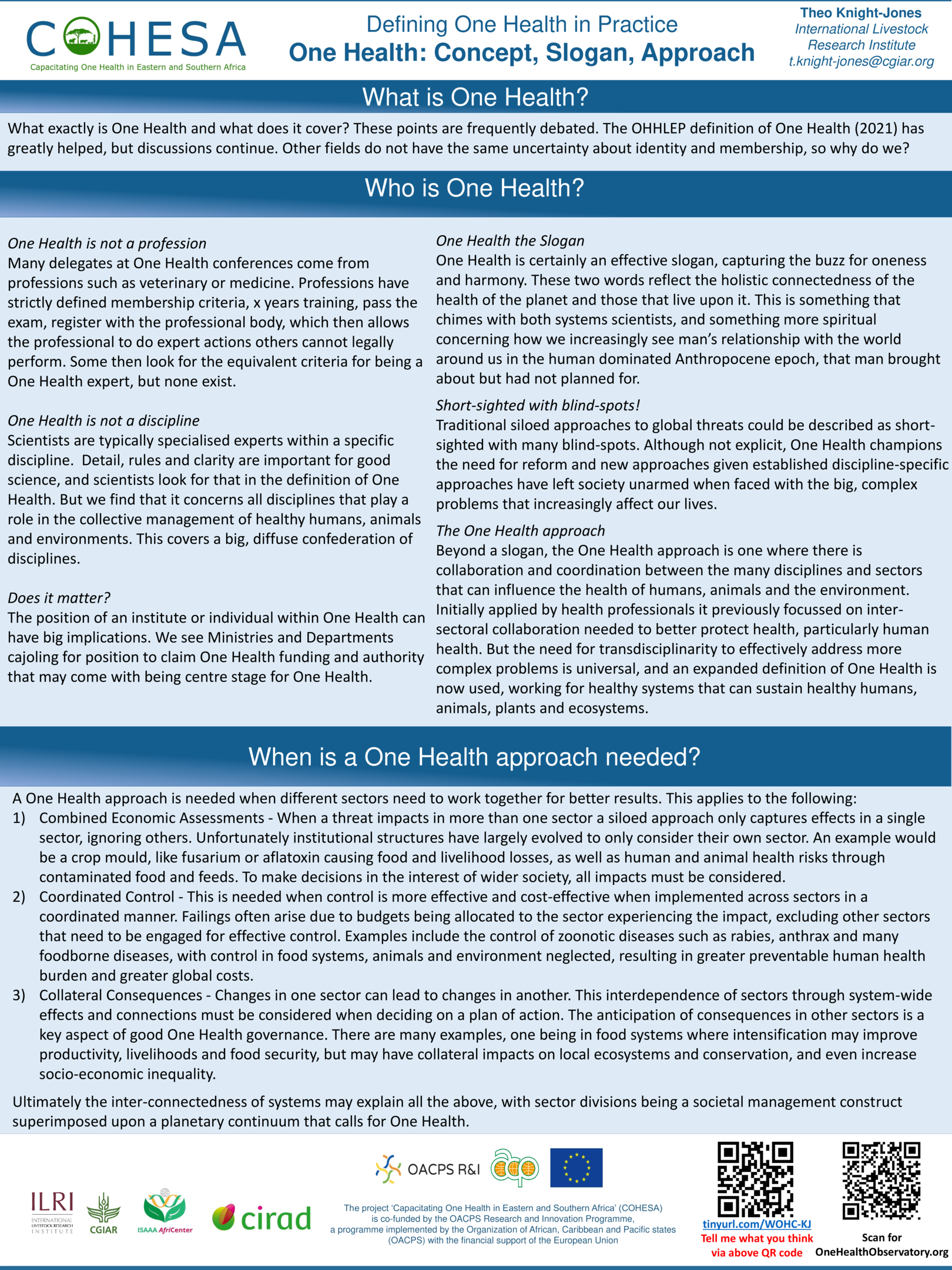
Description
Background
One Health concerns integrated approaches for protecting the health of humans, animals and environments. Although specific topics have been highlighted as requiring a One Health approach (food safety, AMR, zoonoses…), the list of specific topics that fall under the One Health umbrella is effectively endless.
For practical implementation of One Health it is more important to understand when an integrated One Health approach is needed and to have structures in place to enable the use of cross-sectoral approaches for the numerous and varied One Health challenges that arise.
Methods and Results
The EU funded 12 country project Capacitating One Health in Eastern and Southern Africa (COHESA) seeks to improve the capacity of societies to address One Health threats, with strengthening coordination between different government sectors a key component.
To guide the strengthening of One Health governance it is proposed that a One Health approach is needed by public and private sectors under the following three scenarios:
- When a threat impacts in more than one sector. Here a siloed approach would only consider the impacts and benefits in a single sector, failing to capture the interests of wider society. Sadly this blinkered approach is widespread with many examples, such as a crop mould, like fusarium, leading to food and livelihood losses, as well as food and animal feed safety risks.
- A One Health approach is also needed when control is more effective and cost-effective when implemented across sectors in a coordinated manner. An obvious example being the control of a zoonotic disease most efficiently managed by control measures in animals, as well as humans, such as rabies, anthrax and many foodborne diseases, with environmental control often required.
- Finally an inter-sectoral One Health approach is needed when changes in one sector lead to changes in another. This interdependence of sectors through system-wide effects must be considered when deciding on a plan of action. Although the inter-connectedness of ssystems may explain all aspects of One Health, the anticipation of consequences in other sectors is a key aspect of good One Health governance. There are many relevant examples, one being in food systems where aspects of intensification may improve productivity, livelihoods and food security, but may have co-lateral impacts on ecosystems and conservation, or introduce novel food safety risks, or even increase socio-economic inequality.
Conclusions
In this talk we propose that these three points define when a One Health approach is needed and illustrate them with case studies from across Eastern and Southern Africa.
Comments
Add new comment